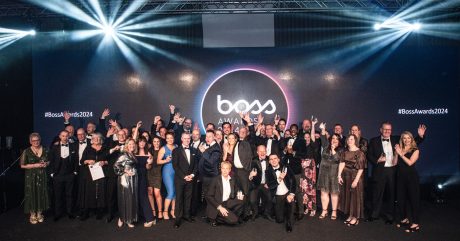
U-Turn on Remote Working: Is Collaborative Working the New Norm?
One of the biggest trends we saw in 2018 was the drop off in remote working. Big tech companies have been recalling their remote working teams including most famously IBM last year, and the focus now is on collaborative working.
The recall was just one part of that, once they are all back in the office, the workplace needs to adapt in order to encourage the kind of innovative thinking companies like IBM felt they were losing out on.
When you think about face to face interaction you might think it’d seem a little old-fashioned amongst the younger workforce today, but surprisingly, a recent study found that Gen Z and Millennials prefer in-person conversations over technology as a means of communication in the workplace. So why does working collaboratively, work better?
What is collaborative working?
Really simply, it’s teamwork, but at a higher level! In a team, each member contributes their own skills and knowledge to achieve a common goal, whereas working collaboratively means you all think together and share your skills and knowledge so you achieve the common goal as one. It sounds complicated, and there are a few skills employees need to brush up on to get this right from learning how to give and take, respecting the opinions of others and being able to engage in negotiations to reach a final solution. This is quite different from teamwork where a strong team leader is essential to pulling together the different abilities in the group, whereas in collaborative working everyone is equal.
Benefits of ‘in-person’ working
A greater understanding of the project: Words are just one way of getting information across, all the non-verbal cues we use when we’re together helps understanding. Eye contact, fidgeting, smiling encouragement, leaning in – all these little things we do without thinking when someone is talking help the presenter to gauge the reception of their ideas. We can say an idea may be a good one, but our eyes or tone of voice may be saying something quite different! This deeper level of communication, which comes from face-to-face working, is great for creativity and bouncing ideas around.
Shared knowledge and skills: In a team each employee plays to their strength; in a collaborative environment, they are encouraged to share their knowledge and skills with each other – making use of all of the expertise and perspective in the group.
Happier employees: In a collaborative working group, individuals feel like they are in it together, making work more enjoyable and satisfying and boosting levels of happiness in the process.
Maximise the capacity of your workspace: By re-configuring your workplace to fit this trend, you lose the concept of ‘desk ownership’ thereby increasing the potential population of your office.
Creating a collaborative workspace: A part of introducing collaboration into your workplace is making sure your environment is set up for it. This means focusing on what employees do rather than the department they work in, and ensuring office spaces are flexible enough to suit different needs and activities. Creating environments where people can concentrate individually or get together to work on a project is key to this. Some key areas can include: solo work space, meeting space, social space, telephone conversation space, adaptable desking and inspiration space – we’re sure you’ll come up with lots more depending upon what kind of work your company does!
Want to transform your office environment? Contact Aston & James today to find out more about their great range of social spacing. Call 01993 706900 or email sales@aston-james.co.uk for more information.
More in Office Services

Catering laundry solutions for spotless table linens by Freya Gutteridge, Oxwash
In the catering industry, pristine table linens are essential for enhancing both presentation and hygiene. Crisp, spotless linens create a professional atmosphere and ensure a safe dining environment for guests. Effective laundry solutions, such as the use of biodegradable detergents and advanced washing techniques, help maintain fabric quality and remove tough stains without harming the environment.

Aston & James Wins Dealer of the Year at National Industry...
The BOSS Federation National Industry Awards Since 1905 BOSS has been the authoritative body for the UK business supplies industry, supporting the sector and its people. It is a not-for-profit organisation that concentrates its efforts on playing a strategic role in the support, promotion and protection of the industry. BOSS represents all businesses along the […]

100 Coats for Those Who Are Homeless in Oxfordshire This Winter
Help us donate 100 coats for those who are homeless in Oxfordshire this winter! Many of us enjoy the luxury of heat and shelter when the weather turns, but many people in Oxfordshire don’t have anywhere to call home. When the cold weather commences those in our community desperately need clean warm coats to help […]
From this author

Aston & James Wins Dealer of the Year at National Industry...
The BOSS Federation National Industry Awards Since 1905 BOSS has been the authoritative body for the UK business supplies industry, supporting the sector and its people. It is a not-for-profit organisation that concentrates its efforts on playing a strategic role in the support, promotion and protection of the industry. BOSS represents all businesses along the […]

100 Coats for Those Who Are Homeless in Oxfordshire This Winter
Help us donate 100 coats for those who are homeless in Oxfordshire this winter! Many of us enjoy the luxury of heat and shelter when the weather turns, but many people in Oxfordshire don’t have anywhere to call home. When the cold weather commences those in our community desperately need clean warm coats to help […]

Family-Owned Workplace Supplies Business Aston & James named as a Finalist...
The BOSS Federation national industry awards Since 1905 BOSS has been the authoritative body for the UK business supplies industry, supporting the sector and its people. It is a not-for-profit organisation that concentrates its efforts on playing a strategic role in the support, promotion and protection of the industry. BOSS represents all businesses along the […]

